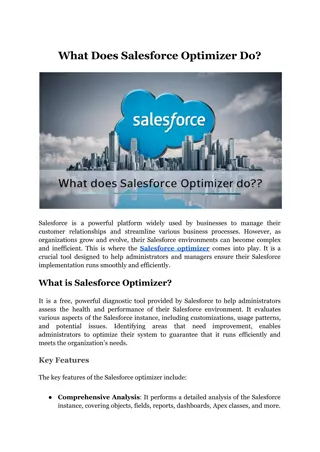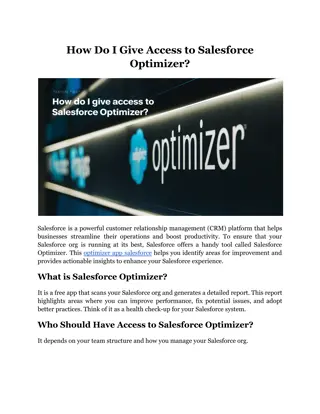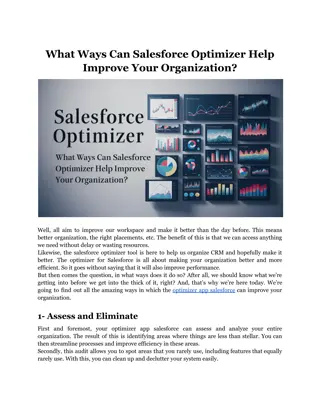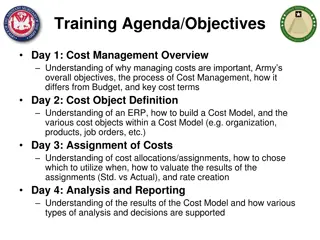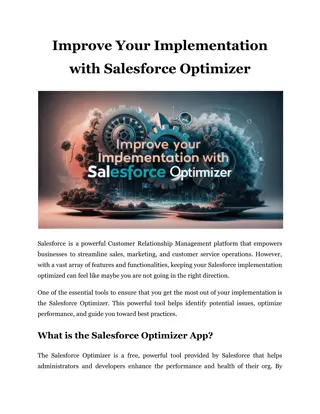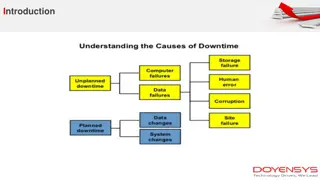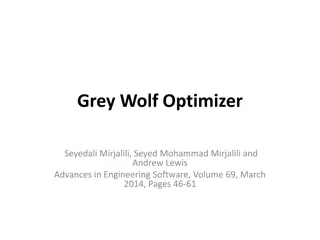
Efficient Execution Plan Strategies and Tips
Learn key considerations and strategies for optimizing execution plans in Oracle databases, including data volume, clustering, and caching. Discover the importance of asking specific questions and understanding your data to enhance performance.
Download Presentation

Please find below an Image/Link to download the presentation.
The content on the website is provided AS IS for your information and personal use only. It may not be sold, licensed, or shared on other websites without obtaining consent from the author. If you encounter any issues during the download, it is possible that the publisher has removed the file from their server.
You are allowed to download the files provided on this website for personal or commercial use, subject to the condition that they are used lawfully. All files are the property of their respective owners.
The content on the website is provided AS IS for your information and personal use only. It may not be sold, licensed, or shared on other websites without obtaining consent from the author.
E N D
Presentation Transcript
Randolf Geist http://oracle-randolf.blogspot.com info@sqltools-plusplus.org
Independent consultant Available for consulting In-house workshops Cost-Based Optimizer Performance By Design Performance Troubleshooting Oracle ACE Director Member of OakTable Network
Three main questions you should ask when looking for an efficient execution plan: How much data? How many rows / volume? How scattered / clustered is the data? Caching? => Know your data!
Why are these questions so important? Two main strategies: One Big Job => How much data, volume? Few/many Small Jobs => How many times / rows? => Effort per iteration? Clustering / Caching
Optimizers cost estimate is based on: How much data? How many rows / volume? (partially) (Caching?) Not at all
Cardinality and Clustering determine whether the Big Job or Small Job strategy should be preferred If the optimizer gets these estimates right, the resulting execution plan will be efficient within the boundaries of the given access paths Know your data and business questions
Clustering Factor Statistics / Histograms Datatype issues
There is only a single measure of clustering in Oracle: The index clustering factor The index clustering factor is represented by a single value The logic measuring the clustering factor by default does not cater for data clustered across few blocks (ASSM!)
Challenges Getting the index clustering factor right There are various reasons why the index clustering factor measured by Oracle might not be representative Multiple freelists / freelist groups (MSSM) ASSM Partitioning SHRINK SPACE effects
Dont use ANALYZE COMPUTE / ESTIMATE STATISTICS anymore Basic Statistics: - Table statistics: Blocks, Rows, Avg Row Len Nothing to configure there, always generated - Basic Column Statistics: Low / High Value, Num Distinct, Num Nulls => Controlled via METHOD_OPT option of DBMS_STATS.GATHER_TABLE_STATS
Controlling column statistics via METHOD_OPT If you see FOR ALL INDEXED COLUMNS [SIZE > 1]: Question it! Only applicable if the author really knows what he/she is doing! => Without basic column statistics Optimizer is resorting to hard coded defaults! Default in previous releases: FOR ALL COLUMNS SIZE 1: Basic column statistics for all columns, no histograms Default from 10g on: FOR ALL COLUMNS SIZE AUTO: Basic column statistics for all columns, histograms if Oracle determines so
Basic column statistics get generated along with table statistics in a single pass (almost) Each histogram requires a separate pass Therefore Oracle resorts to aggressive sampling if allowed => AUTO_SAMPLE_SIZE This limits the quality of histograms and their significance
Limited resolution of 255 value pairs maximum Less than 255 distinct column values => Frequency Histogram More than 255 distinct column values => Height Balanced Histogram Height Balanced is always a sampling of data, even when computing statistics!
SIZE AUTO generates Frequency Histograms if a column gets used as a predicate and it has less than 255 distinct values Major change in behaviour of histograms introduced in 10.2.0.4 / 11g Be aware of new value not found in Frequency Histogram behaviour Be aware of edge case of very popular / unpopular values
SELECT SKEWED_NUMBER FROM T ORDER BY SKEWED_NUMBER Rows Rows Endpoint 1 1,000 40,000 1,000 10,000,000 rows 70,000 80,000 2,000 100 popular values with 70,000 occurrences 2,000 120,000 2,000 140,000 160,000 3,000 3,000 250 buckets each covering 40,000 rows (compute) 200,000 3,000 210,000 240,000 4,000 4,000 250 buckets each covering approx. 22/23 rows (estimate) 280,000 280,000 4,000 5,000 320,000 5,000 350,000 6,000 360,000 400,000 6,000
7,000,000 1,000 10,000,000 100,000
7,000,000 1,000 10,000,000 100,000
Check the correctness of the clustering factor for your critical indexes Oracle does not know the questions you ask about the data You may want to use FOR ALL COLUMNS SIZE 1 as default and only generate histograms where really necessary You may get better results with the old histogram behaviour, but not always
There are data patterns that dont work well with histograms when generated via Oracle => You may need to manually generate histograms using DBMS_STATS.SET_COLUMN_STATS for critical columns Don t forget about Dynamic Sampling / Function Based Indexes / Virtual Columns / Extended Statistics Know your data and business questions!





